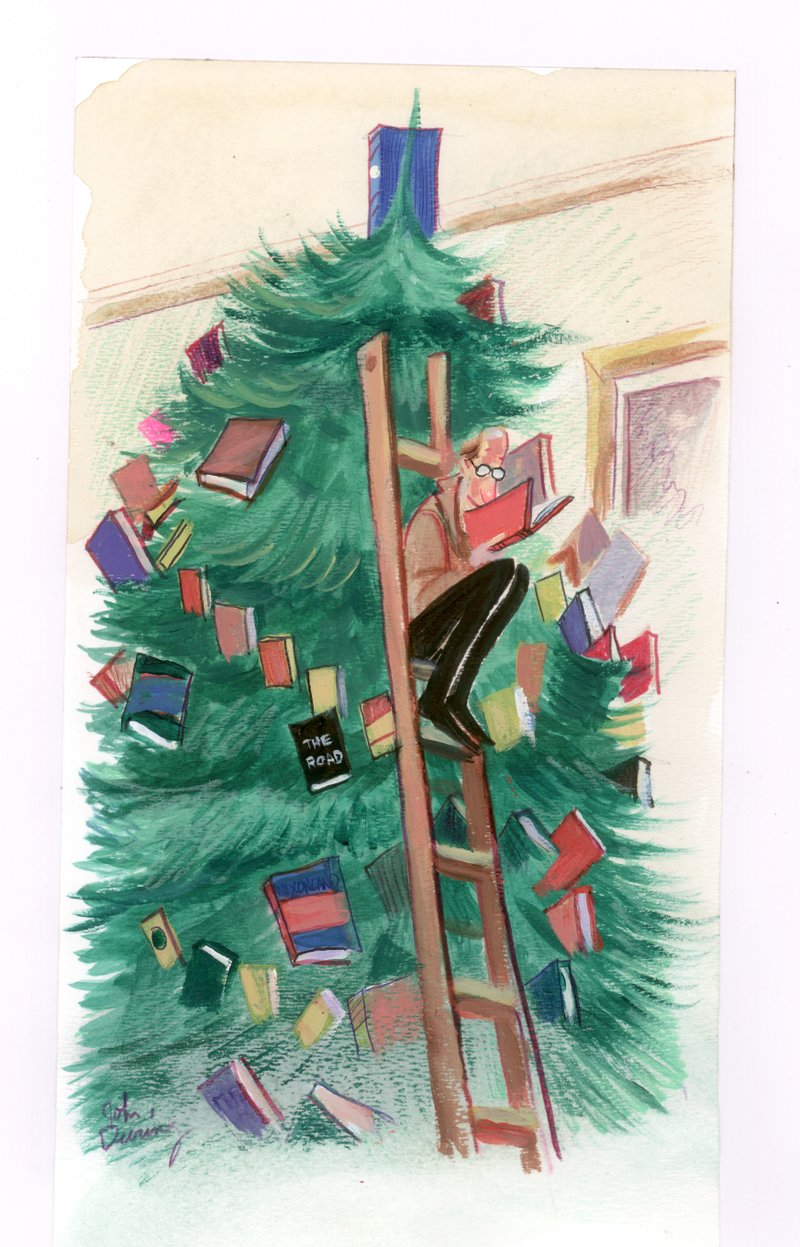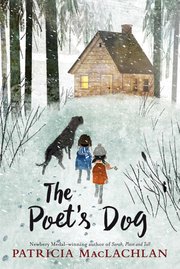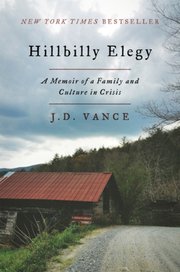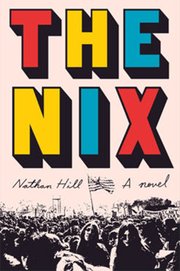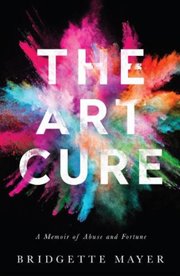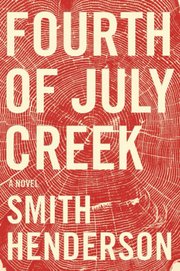Books are the biggest winners of 2016. The miseries of the past year (which won't be repeated here) have been sending many of us to the comfort of a couch, where we check out of the world for a while to lose ourselves in someone else's writings.
And what a year it's been for books! My book club, which started in September, opened with brutal, devastating The Underground Railroad by Colson Whitehead, moved on to quirky modern mystery Before the Fall by Noah Hawley, then switched gears with a compelling mix of science and humanity that is Lab Girl by Hope Jahren.
Hardly any of our nine members missed a gathering in the last four months. Maybe it's the chance to have wine and cupcakes for dinner once a month, but I suspect there's more to it than that.
Other books likely take your mind off the news (fake or otherwise):
For laughs, there's no beating the snarky staccato humor and entertainment value of Razor Girl by Carl Hiassen, set in the Florida Keys, with many of the same characters (but much more confidently and hilariously written) from his 2013 novel Bad Monkey.
The Poet's Dog by Patricia MacLachlan is a spare, unsentimental, and evocatively illustrated kids' book that concerns love and loss among characters such as a thoughtful, faithful dog, a gifted poet in deteriorating health, and two bright, bewildered children lost in a snowstorm.
My Name is Lucy Barton by Elizabeth Strout is a slender, well structured and relevant novel about a New Yorker, raised among an abusive family in palpable poverty, who struggles to reconnect with her stubborn, seemingly unloving mother.
Other hot properties:
Born to Run, a refreshing, self-effacing autobiography by Bruce Springsteen.
Moonglow, a faux-memoir novel concerning the relationship between the narrator and his dying grandfather by Michael Chabon (writer of 2007's The Yiddish Policemen's Union, one of my favorite novels of all time).
Everybody's Fool by Richard Russo (who won a Pulitzer for his novel Empire Falls in 2002), continuing the
rambles of Donald "Sully" Sullivan first encountered in the author's Nobody's Fool, published 23 years ago.
Here are more memorable reads from this year (and previous years), according to some of our favorite readers:
From Kane Webb, director, Arkansas Department of Parks and Tourism:
Hillbilly Elegy by J.D. Vance. Upon reading Vance's memoir of life growing up in rural Kentucky and Ohio, familiar in so many ways, for the first time I recognized that Donald Trump could be elected president of the United States.
Originals by Adam Grant. How and why the oddballs among us change worlds. And I mean "oddballs" in the best possible way.
Booth by David M. Robertson. Historical fiction of the Lincoln assassination as told from the perspective of John Surratt, the only conspirator not to be hanged. If it's Lincoln-related, I'm in, and this effort, first published in 1988, is better than most.
--------------
Capi Peck, restaurateur and Little Rock city director:
Deep Run Roots by Vivian Howard. My new favorite Southern cookbook with great recipes and photographs. Simple food and wonderful storytelling about the rich tradition of North Carolina's coastal cuisine
Sweetbitter by Stephanie Danler. A must for my restaurant peeps and a sensual read and love story for any foodie.
The Lacuna by Barbara Kingsolver. I've read this 2009 novel twice because it is just that good. If you like the genre of magical realism, you will love this book. Frida Kahlo and Diego Rivera are two of the characters.
Author and lawyer Ed Bethune, former FBI agent, former Marine, and former member of the U.S. House of Representatives:
The Nightingale by Kristin Hannah. I'm drawn to books about World War II, particularly those with characters--two sisters in this case--who react in different ways to the turmoil of war.
The Girl on the Train by Paula Hawkins. I almost stopped reading this 2015 novel due to the format, but stayed with it. Interesting story about internal conflicts and how easy it is to jump to the wrong conclusions based on what we see.
--------------
Gerald Koonce, retired after careers as an Arkansas newspaperman and a globe-trotting software engineer:
The book that impressed me the most this year was The Nix by Nathan Hill, a mesmerizing sprawling satirical debut novel. I think of it as the Catch-22 for the first part of this century. It would take too much space to list all of Hill's targets in this lengthy page-turner, but there is something for everyone. I forced myself to take in small parts--a chapter per day--because I could tell from the beginning I did not want it to end. And as my college Modern Novel professor said, like all great works of literature, it is also a love story.
I glommed onto 2014's H Is for Hawk by Helen Macdonald from my wife's book club. It is a sensitively and beautifully written memoir by a woman who coped with her father's death by taking up falconry. It also is a meditation on literature and has a fascinating look at essayist/novelist E. B. White.
Full disclosure: Taylor Kitchings, who wrote Yard War, is a friend of mine from college. Middle schoolers are the target audience of this story about a 12-year-old boy in the 1964 Jackson, Miss., country club set who just wants to play sandlot football with the son of the family's black housekeeper but finds he has stirred up a hornet's nest. The writing hit this adult like a punch to the stomach. It captured how I felt during that period and was so vivid that several times I had to put it down and come back to it another day.
--------------
Catherine Rodgers, contemporary artist, teacher and writer:
Coming Apart: The State of White America 1960-2010 by Charles Murray is a disturbing book. Murray sites five decades of research to show how the new upper class and the new lower class have separated so much in their behaviors and values that they have little in common any more. The separation has more to do with cognitive ability than the accumulation of money, although the accumulation of money is a by-product of talent.
The most talented people live near each other in the nicest neighborhoods and are isolated from everyone else. They create a culture that differs from mainstream America, which in turn keeps them ignorant about how the rest of the population lives. The reason I found this 2012 book disturbing is because it doesn't offer any answers to this great divide, which threatens our democracy. The new upper class will change only if it decides it is in their best interest to change.
The Art Cure by Bridgette Mayer is an easy read and an inspiring one for anyone considering a career as an art gallery owner, or the arts in general, who worries they will starve if they choose this path. Mayer grew up in squalor with a drug-addicted mother and spent much of her childhood in foster care. She now owns successful galleries thanks to her work ethic, determination and intense interest in the artists she represents. Unlike Coming Apart, which leaves you feeling hopeless, Art Cure is a success story demonstrating that through hard work and persistence, the American dream can still be achieved.
Ad man Chester Storthz:
Girls by Frederick Busch. I generally avoid books with glowing dust jacket reviews by other authors. They know how difficult the process of writing, rewriting, publishing and all the other stuff is, and they just don't seem able to be objective. I find professional critics more reliable. But when the writers/reviewers are James Lee Burke and Annie Proulx, well, I'm gonna take a shot.
Bull's-eye. I like dark and murky. Crisp dialogue. Multi-dimensional characters who are good but flawed, who are flawed but good. Throw in a good story and it approaches perfection. Girls, published in 1997, checks all the boxes. Four for four. The Superfecta.
Jack, the narrator, is a campus cop at a small New England college, forever saddened by the death of his infant daughter and constantly wrestling with the accompanying demons that include a dissolving marriage. He muses that while he passed tests to drive and to own a firearm, he never had a background check to become a father. When a local teenage girl goes missing, Jack is recruited to help find her. The search is intense; the harsh and frozen New England winter a perfect metaphorical setting for personal struggle and despair.
This novel is about what is lost and what is found. It is not heartwarming. It is not cute. It is impossible to put down.
A Man Called Ove by Fredrik Backman. I'm surprised when someone thinks they know me better than I know myself. So when my friend Lisa gave me a 2012 book whose jacket review included such tripe as "Heartwarming, charming, and inspiring," and "The story of a grumpy old curmudgeon who doesn't like anyone he knows and the feeling is mutual ..." OK, maybe I'm a bit sensitive about the "grumpy" part, but I could have assured you that I would never pick it up. And on top of that, it was a best-seller, and since my literary taste is never mainstream ... well, you get it.
But I ran out of dark and depressing reads, so pick it up I did. Lucky me. It's heartwarming, charming and inspiring. It's wonderfully conceived and written, and certainly deserves to be a best-seller. You know, I'm shocked when someone knows me better than I know myself. But after all, Lisa is a psychologist. It appears she's pretty good.
Fourth Of July Creek by Smith Henderson. In the backwoods of Montana, Department of Family Services worker Pete Snow deals with broken families (including his own), broken bones, fractured dreams. The hills abound with Ritalin for the kids, meth and whiskey for everyone else, good guns, bad dogs. Survivalists fight the government and the elements while losing battles to disease. The townspeople fight among themselves at the Dirty Shame bar. And Pete fights for the families who need, but don't want, his help. All the while, searching for his runaway daughter. If you like Cormac McCarthy (I do), if you like Daniel Woodrell (my favorite), pick up this 2014 novel by Henderson Smith. The man can take you places you haven't been. And you might not want to come back.
Next week: More readers' picks.
Editorial on 12/18/2016
